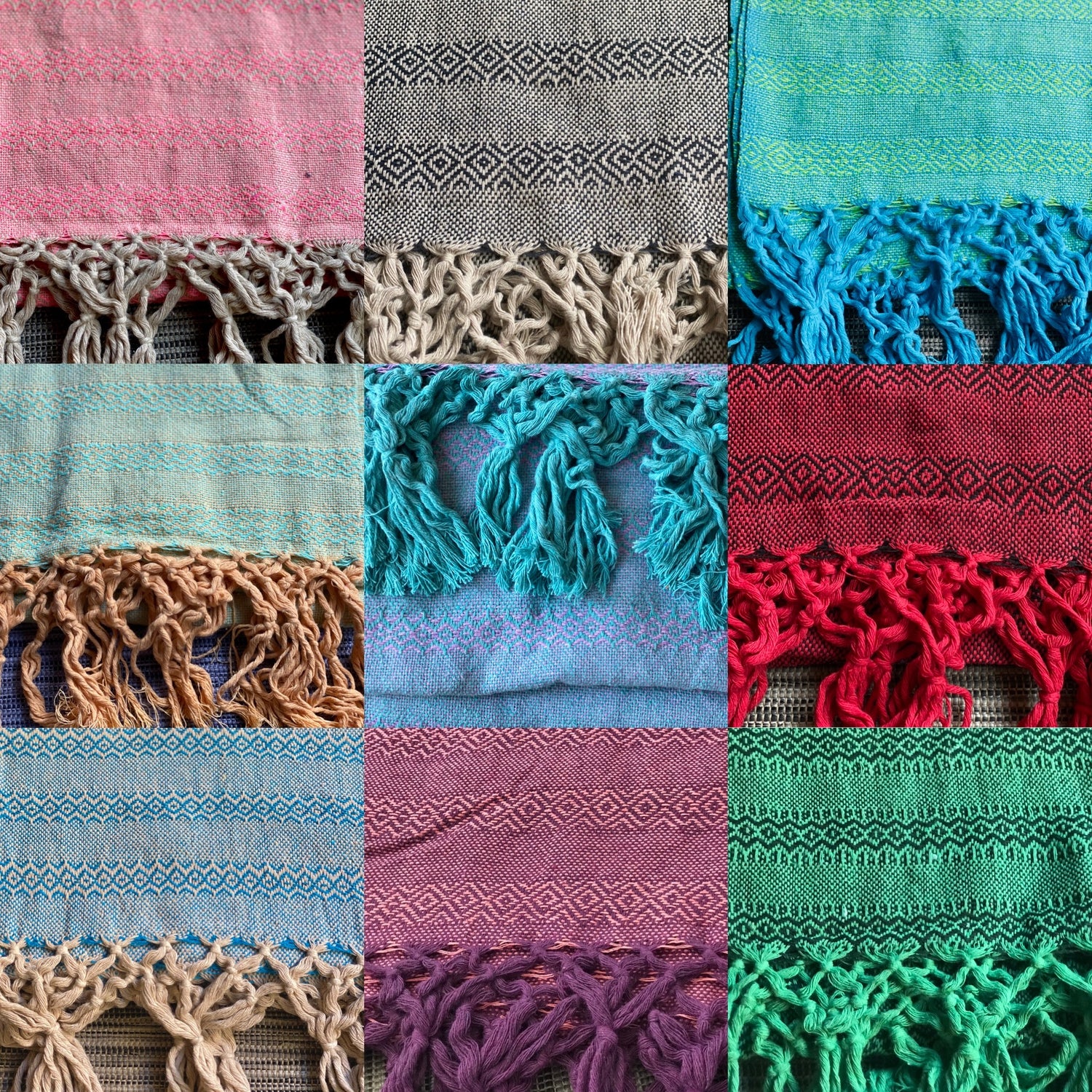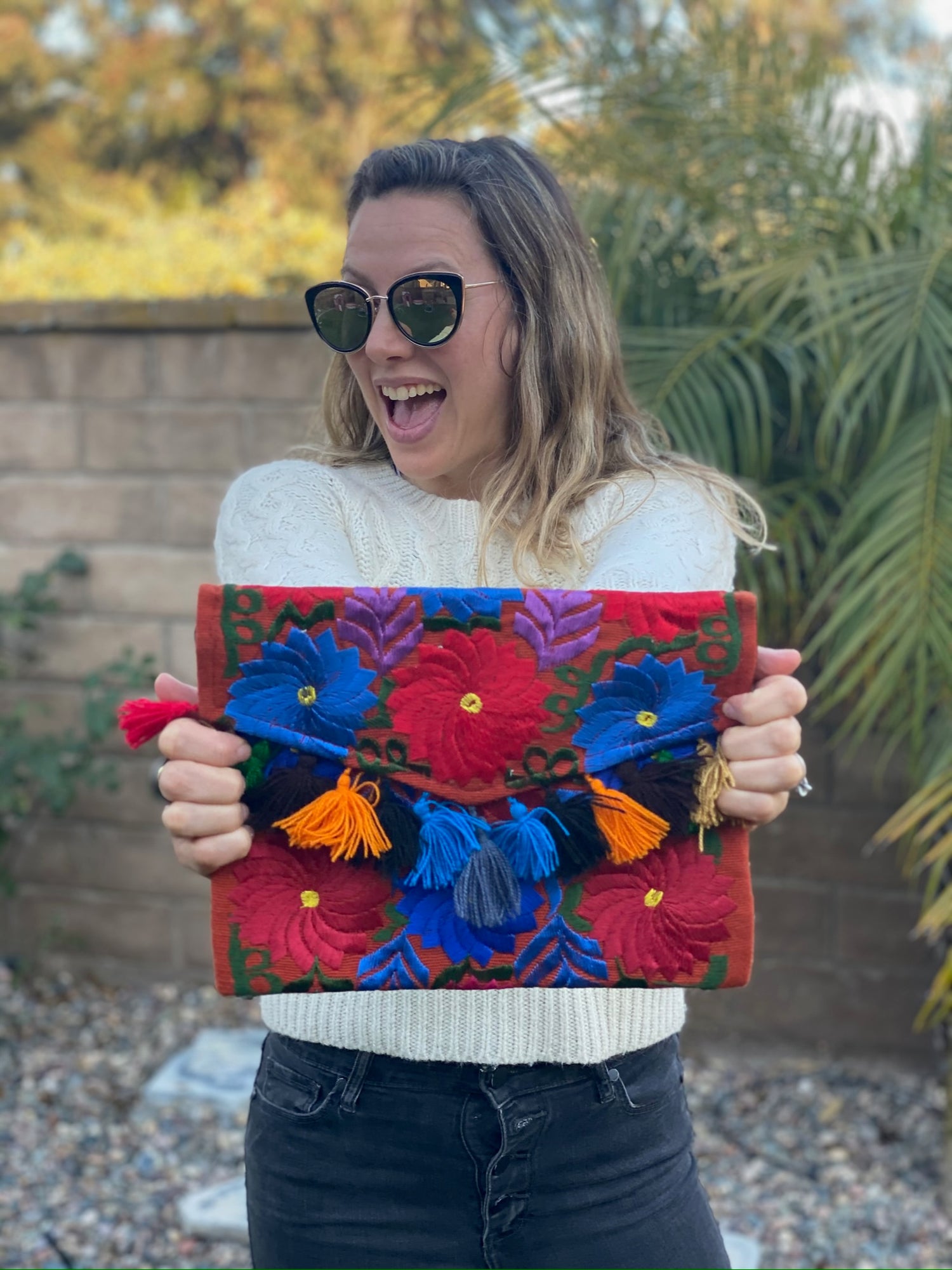The rebozo is more than just a traditional shawl; it tells a story of Mexico’s rich culture and heritage.
Over time, rebozo styles have transformed from practical items used by indigenous women into fashionable statements embraced by modern designers.
This evolution reflects not only artistic creativity but also changing social norms and cultural pride.

As you explore the journey of the rebozo, you'll discover its historical significance and how it has adapted to contemporary fashion trends.
From ancient craftsmanship to vibrant runway presentations, the rebozo continues to symbolize cultural identity while appealing to new generations.
Understanding this evolution might inspire you to appreciate the blend of tradition and modern style in your wardrobe.
Key Takeaways
- The rebozo has deep historical ties to Mexican heritage.
- Contemporary designers are reshaping how rebozos are viewed in modern fashion.
- Wearing a rebozo connects you to a rich cultural story that spans centuries.
Historical Significance and Evolution

The rebozo is not just a garment; it carries deep historical and cultural meaning. Its evolution reflects the rich tapestry of Mexican heritage, from indigenous traditions to modern adaptations.
Understanding its origins and craftsmanship can enhance your appreciation of its importance.
Origins and Cultural Roots
The rebozo has roots that trace back to pre-Hispanic Mexico. Indigenous communities used simple shawls from local fibers for warmth and protection.
Over time, these garments evolved, incorporating elements from Spanish influence after colonization.
This merging of cultures gave rise to various styles and purposes for the rebozo.
It's commonly worn by Mexican women today, symbolizing cultural identity and deep connection to their heritage. The rebozo is often associated with significant life events, such as weddings and births, emphasizing its emotional and cultural importance.
Traditional Weaving and Dyeing Techniques
The creation of a rebozo is a meticulous process that highlights artisan skills. Craftsmen often use a backstrap loom, a traditional method passed down through generations.
This technique allows for intricate designs and patterns unique to various regions, especially Oaxaca.
Artisans often utilize natural dyes, such as cochineal, to create vibrant colors in these shawls. The dyeing process is complex and requires significant skill.
Each rebozo can take days or even weeks to produce, showcasing the dedication of the artisans. The resulting textiles are not just clothing; they represent a blend of craft and identity.
Iconic Figures and Cultural Representation
Throughout history, notable figures have helped elevate the rebozo's status in Mexican culture.
For example, artist Frida Kahlo often incorporated rebozos into her wardrobe, using them as symbols of identity and pride.
The rebozo has become a representation of Mexican women's resilience and strength. It appears in literature, art, and music, reflecting its cultural significance.
As you explore the history of the rebozo, you will find that it is not merely an accessory but a vital part of Mexican identity and cultural expression.
Contemporary Influence and Modern Adaptations

The rebozo has transformed significantly, blending traditional techniques with modern fashion trends. This section explores how contemporary designers incorporate these elements and adapt them for today's world while preserving cultural heritage.
Modern Designers and Global Reach
Designers like Carla Fernández and others have played vital roles in popularizing rebozos.
They often use vibrant colors, unique textures, and traditional weaving techniques to create hybrid garments that appeal to modern tastes. These garments showcase not only their artistic expression but also the rich cultural heritage behind the rebozo.
Fernández's work has reached international markets, bridging connections between indigenous communities and fashion enthusiasts.
By modernizing the rebozo, she introduces a wider audience to its significance, making it a sought-after accessory worldwide.
Integration in Contemporary Fashion
In current fashion scenes, rebozos are often seen on runways, blending seamlessly with contemporary styles. They serve as versatile fashion pieces, enhancing outfits with color and drape.
Designers incorporate various materials, including cotton, silk, and occasionally wool, which allow for varying levels of warmth and texture.
Collections at places like the Fashion and Textile Museum in London highlight the beauty of rebozos. These exhibitions not only celebrate this iconic textile but also encourage designers to explore new patterns and styles that retain a nod to tradition while embracing innovation.
Preserving Tradition in Modern Weaving
While adapting to modern tastes, many artisans remain committed to preserving traditional weaving techniques.
In places like Tenancingo, skilled weavers continue to pass down methods that have been used for generations.
These practices ensure that the craftsmanship of the rebozo remains intact despite its evolution.
Artisans often blend traditional patterns with contemporary designs. This approach allows for a dynamic range of products that respect their roots while appealing to current fashion sensibilities.
Frequently Asked Questions

This section addresses common inquiries about the rebozo, covering its historical significance, traditional uses, and modern adaptations. Understanding these aspects offers a glimpse into how this garment has evolved and continues to shape fashion today.
How has the rebozo's role in fashion changed over time?
The rebozo was once primarily a practical item used by women for warmth and carrying goods. Over time, it has transformed into a fashion statement.
Today, you see it not just in traditional settings but also on runways and in everyday wardrobes.
Can you describe the traditional uses and symbolism associated with the rebozo?
Traditionally, rebozos served various purposes, including a head covering, baby carrier, and shawl. Each pattern and color often held specific cultural meanings, symbolizing community, identity, and even life stages. The rebozo remains a powerful emblem of Mexican heritage.
What are some modern adaptations of rebozo weaving techniques?
Modern weavers often experiment with new materials and designs, incorporating non-traditional fibers into their creations.
Techniques like digital printing and mixed media are popular, allowing for unique interpretations while retaining the craftsmanship of traditional weaving.
In what ways has the rebozo been incorporated into contemporary fashion?
Today, designers use the rebozo in various ways, from elegant shawls to everyday accessories.
The garment is often featured in collections that celebrate cultural roots while appealing to current fashion trends, promoting both tradition and innovation.
What are the key differences between historical and modern-day rebozo styles?
Historical rebozos typically featured natural dyes and traditional motifs, while modern styles may include synthetic materials and contemporary patterns. The length and function have also evolved, with many designs now aimed at a fashion-forward audience rather than strict utility.
How do cultural traditions influence contemporary rebozo designs?
Cultural traditions play a significant role in the design of contemporary rebozos. Many modern pieces draw inspiration from traditional patterns and techniques. This blend ensures that the rebozo remains a relevant symbol of identity in today's fashion landscape.




